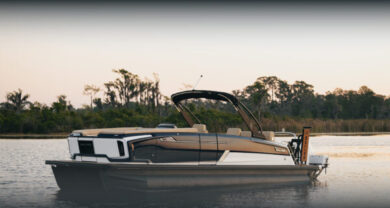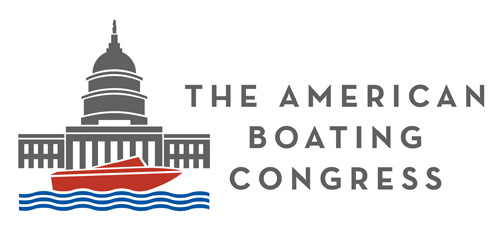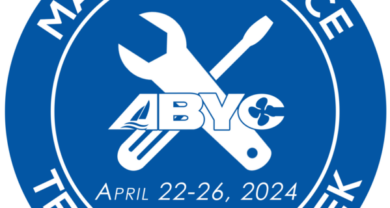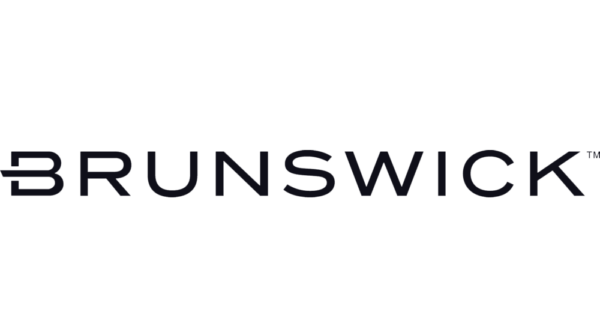A different style of leadership
Boating Industry (BI): What makes Genmar different than other boat companies?
Irwin Jacobs (IJ): Don’t feel sorry for me, but I’m working 15, 16 hours a day. No one can make me. It’s my own company. My wife says to me, ‘You’re working harder today than you have in your whole life.’ I said, ‘Well, there’s a lot of responsibility on my shoulders. I’ve got a lot of towns, people working for me, customers, vendors, dealers. I mean, I carry that burden on a personal basis.
Should I do it? Well, maybe if it was other people’s money I wouldn’t do it. But it’s my own, and I’ve done it for 35 years, and I’ve never in my life walked away from a challenge. I wear it on my shirt sleeve and I always have. You’re not going to back me off, and if you slap me down, I’ll get right back up again. Trust me, I will. You know, that’s the way I want to be represented out there. When they say, ‘Do unto others what you want done unto you,’ that’s the way it needs to be. And people are looking to me for leadership and direction. I’m telling them what I believe and what I think.
BI: What are the advantages that you believe Genmar provides its dealers?
IJ: I think you have to look at it philosophically and say, ‘What does Genmar stand for as a company?’ Are they just one hot brand and 13 bad brands or do they care about all 14 brands? Most multi-brand companies basically have pets. I can tell you that I solicit dealers and business for our Triumph boat line, our Glastron boat line …
In Canada, 33 years ago, I pushed for us to put Lund boats into the fishing camps up there, and I said I don’t really care if we don’t make any money on them. Get them up there. People will go home and they’ll want to buy our boats. Well, we picked up a 65- to 70-percent market share.
We now have a product called Triumph, and I am convinced … we’ve got the answer to what they need up there. I went up there myself to solicit the camps. I just took one camp for 100 boats bought from me … I have another group of places talking about doing 400 boats with us.
I will do that myself, but I can’t do it everywhere and be there all the time for everyone, but everyone knows I’m going to do everything I can. It isn’t because I need 4,000 boats to interest me. If it’s one or 10 boats or 1,000 boats, I’m going to sit there and do what I need to do. I think that’s pretty well known that I’m very proactive.
BI: It comes back to the personal commitment that you have?
IJ: Yes, but our people are being told this is the way we do business. This dealer in Canada called my office today. We have this new FinCraft line. This dealer called up and he’s got this big show coming up. He’s a big dealer of ours up there, and he said, ‘Irwin, I need that FinCraft boat up here. Now, I’ve got to have one up here on the 20-something of February.’ I said, ‘What’s the problem?’ He said, ‘I don’t think they can get it to me.’ I said, ‘What date do you want it?’ I said, ‘You’ll have it.’ He said, ‘You’ll have a truck?’ I said, ‘We’ll have a truckload.’ He said, ‘I’ll take it.’ I called our guy up and I just said, ‘I don’t want to hear about it. Just have the boats up there.’ I said, ‘Call him up right now when you hang up with me and tell him it’s done.’
Well, obviously it was done. That’s the way it should be, by the way. Our people should have been able to respond to that. He shouldn’t have had to call me. But he knew he could. That’s a level of comfort. He said to me when I called him back this afternoon, ‘Irwin, let me tell you something. I know I’m with the right company. Nobody does these kinds of things,’ he said.
I’m not trying to put a fun show on for him or anybody else. That’s just the way people should be treated. And our people should be treating him that way. I’m not picking on our people. They’ve got 160 to 200 dealers to deal with today. It’s a good problem to have, but they’re going to have a real problem if they don’t make it a good problem.
BI: One of the things we’ve been talking to dealers about lately is the pre-owned business. And we’ve seen a lot of dealers focus more attention on that part of their business. Do you think there’s a role for manufacturers in terms of supporting their dealers more on the pre-owned side?
IJ: Ranger is doing some testing in this area, and a lot of our other companies are too. You don’t just come up with a program. You’ve got to test it, and deal with the elements to understand what they are. I think it’s only a matter of time, but I’ve got to tell you, this is not a good time to make these kinds of dramatic changes. We need to get through this downturn and then deal with these kinds of things based on how we’re doing in our businesses, when we’re reinvesting in our businesses, which today is hard to do for things that haven’t been tested.
BI: So, it sounds like that’s an area you’ll be thinking about down the road. Where do boat builders need to be focusing today?
IJ: Right now, the boat builders are focused on survival. How are we going to make it through this thing? I’m not just thinking about survival. I’m thinking about all the things we’ve been talking about: floor planning, customer service, things we need to do. Everyone says, customer service … listen, I call some of our own boat companies, and I have trouble getting through to people. And they know, when I want to get hold of them, I want it now. Let me tell you something, they get a message that says, “Where are you?” And two minutes later, I hear from them. But they’re not avoiding me. The sizes of the businesses have been cut down. People are multitasking. There are a lot of adjustments to make. Unfortunately, I’m not the type of person to sit around and wait for some natural response. I want it now, as I give them now, for what it is.
BI: With your focus on the entry-level boaters, with the FinCraft line, for example, can you talk about the demographic profile of that entry-level boater and whether that has changed?
IJ: Well, let me clarify this a little for
you. We’re going into the entry-level
market with a middle-market boat.
FinCraft price does not reflect the value of the boat. We had a huge breakthrough in VEC technology, huge, that allowed us to build this boat in 35 minutes in our plant, our hull, with a built-in stringer system, everything all done in 35 minutes. And then we go into the deck, put it together, and everything else. Now, if I’m going to build 10,000 of those this year, that means I’m going to build 200 a week or 40 a day. I can probably get that done with two or three sets of molds. If this was traditional, I’d need 20 sets of molds per day. Because I build a boat every 35 minutes, the hulls, I can do this. They’ve come up with a way, with our stringer system, the way they’ve done this thing, Liz, they’re about 8 months ahead of schedule, maybe a year. When I looked at this aluminum deal, you know, I didn’t realize at the time that I sold the boat companies that these prices were just going to keep rising. I thought they were high when I sold it. Lund was way up there, Crestliner was somewhere in between, Lowe was in there. Lowe was entry-level. So we really put an effort out to look at the aluminum business because I was convinced aluminum has seen its best days. You know, aluminum has a two-year warranty on it these days. I can give them a lifetime warranty with ropolyene, and I can compete with them at that price, even cheaper. And I can give them a different ride. I can give them a boat that isn’t going to break. I can give them a boat with all the amenities on it.
BI: Do you expect to bring new people or people who have exited boating …
IJ: And I was going to get to that. What I want to bring isn’t a boat into the market that is only good for that first-time buyer. I wanted to make it a boat that is good for people who may have left, people who may have to downsize or people’s first-time buy. I don’t want people saying, ‘I got to buy that cheap boat in order to get into boating?’ Are you kidding? That’s what that boat is? I mean, people are shocked when they see it, when they see the price. It’s $13,995, and we give $1,000 show rebate: $12,995 for a 17-foot boat. Do you know what everybody else’s boats sell for in that category? I mean, go to Tracker. Their boats are more expensive than this. We know we really have something from that standpoint. We’re not making any fortune on it. We’re making money on the boat, and we’ll continue to, but as we bring more and more models into it, we’ll broaden it. I do have a goal. I’m not telling you I know we’re going to get there. In the year 2010, I want to build 10,000 of these boats. We’ll have all five models, and we’re going after everybody, I mean everybody that is even close to us in the category. And I’ve got to tell you something, they don’t have any margins on those boats today, so it’s unlikely they’re going to be able to do something. I’m very excited about it because it’s more than an entry-level boat, but it’s an entry-level market, and I don’t want people to feel, ‘Oh, I’ve got to buy that really cheap boat in order to do this.’ No, I want them to say, ‘This is really something.’ Do you realize that if people put down two or three thousand dollars what their payment is per month? $139. Five dollars a day for a boat. There ain’t nothing out there like that.
BI: When you think about how you’re responding to the conditions we’re dealing with, what makes Genmar different?
IJ: I think the difference is that people don’t expect me to be involved with what I’m involved with today, from a competitor’s point of view and from a dealer’s point of view. The fact is that I feel, ‘How can I talk to our dealers if I can’t talk to our people?’ I have to match this up. There are things I can get done that our people can’t get done. Those are the kinds of things I want to do. I don’t want to get in people’s way and change the things they’re doing for the sake of change. That’s not my style. Change is where it’s needed and necessary. There are companies a lot smaller than us that don’t talk to their people the way that I do. Some people think they’re above it. They think, ‘I don’t need to talk to our dealers. Somebody else do it.’ I have a dialog. I send letters out. I tell them what I think.
… It isn’t just me. Our people care about our dealers. I mean, Rick Fulmer, Jeff Olson, Al Kuebelbeck, Bill Roger, Randy Hopper, Bob [VanGrunsven] … they’re living and dying it every day. I don’t take them into meetings every day and crunch numbers and bring a bunch of bean counters together to sit there and figure out how to run my business. No way.
And yet they’ve got to have some discipline in that area. They have to know what the hell they’re doing. I think that is different than the way the industry is run.




